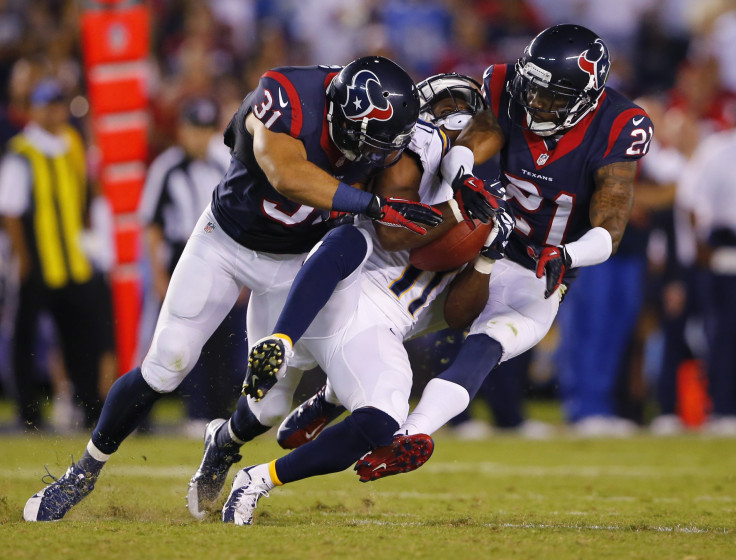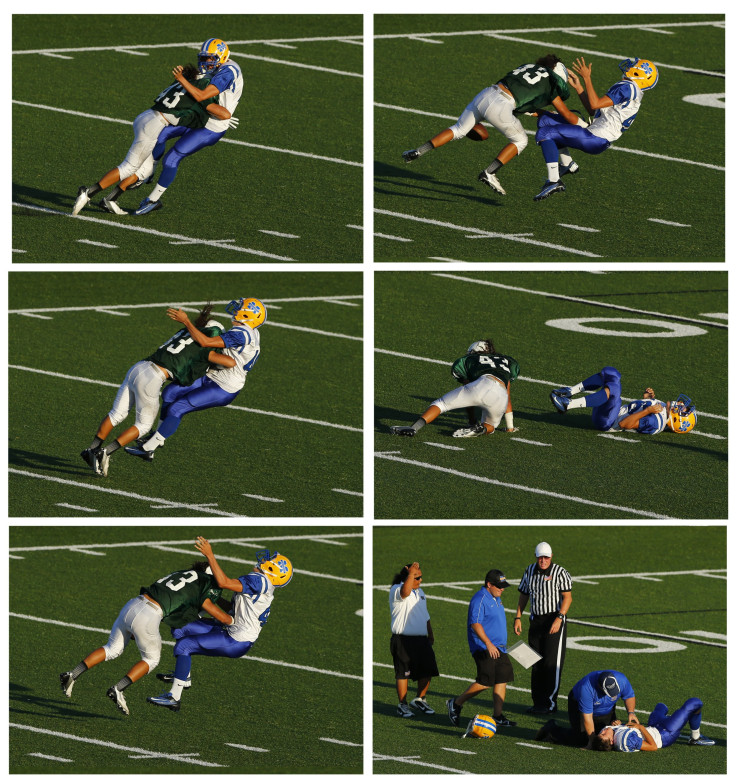Should Football Be Banned? Doctors Debate High School Sport Risks From CTE And Concussions

Doctors and parents alike are debating whether it's safe to have high schoolers play football as the risk of degenerative disease from concussions become more apparent. As concussion diagnoses grow more common and after top NFL officials formally acknowledge in March the link between the sport and chronic traumatic encephalopathy (CTE), a group of doctors set out to determine whether the benefits of playing the sport really outweigh the risks, in a discussion published in Pediatrics, a monthly peer-reviewed medical journal.
Some doctors took a hard-line stance on discontinuing the sport in high school altogether, while others emphasized the need for a better understanding of concussion risks during play.
“Pediatricians should advocate for the discontinuation of high school football programs until, and more importantly unless, we can be assured that it does not have long-term detrimental consequences,” said Dr. Lewis Margolis of the University of North Carolina.

Dr. Greg Canty of Children’s Mercy Hospital in Kansas City said the conversation needs to extend far beyond football.
“We need to remember the large increases in concussion have been seen across all sports, including soccer, hockey and basketball. It extends across gender lines into female sports where the incidence may be even higher,” said Canty. “If we eliminate football, what sport is next and what is our threshold? Who is going to be responsible for defining ‘safe play?’”
Emergency department visits for concussions and other traumatic brain injuries increased by 70 percent from 2001 to 2010, according to the Centers for Disease Control and Prevention. How much of that is due to increased awareness versus an actual increase in concussions is unclear.
CTE is a progressive brain injury formerly attributed solely to boxers but increasingly discovered in professional football players. Currently, the condition can only be diagnosed after death, placing increased importance on awareness of risk factors that can cause the disease.
“Many experts in sports medicine believe that football can be made safe enough,” said Dr. John Lantos of Children’s Mercy Hospital. “Given that, pediatricians should try to help parents and school boards understand the facts. They should also insure that a culture of safety prevails over a culture of winning at any cost.”
SaveSave
© Copyright IBTimes 2024. All rights reserved.






















